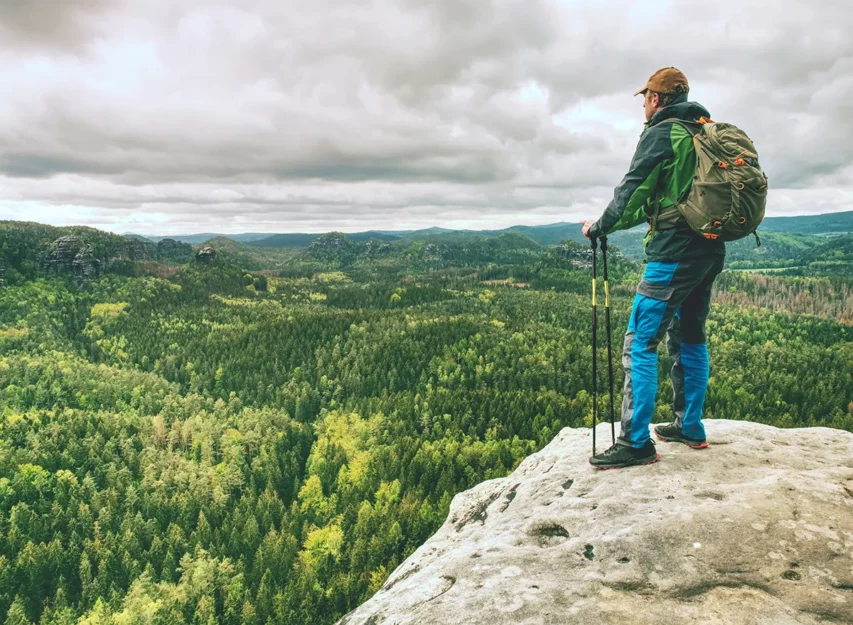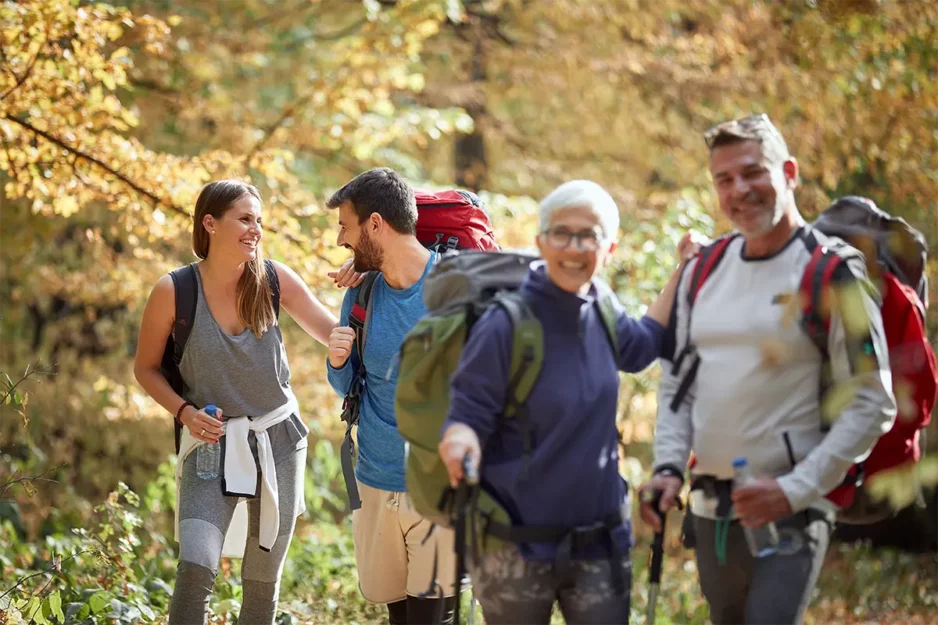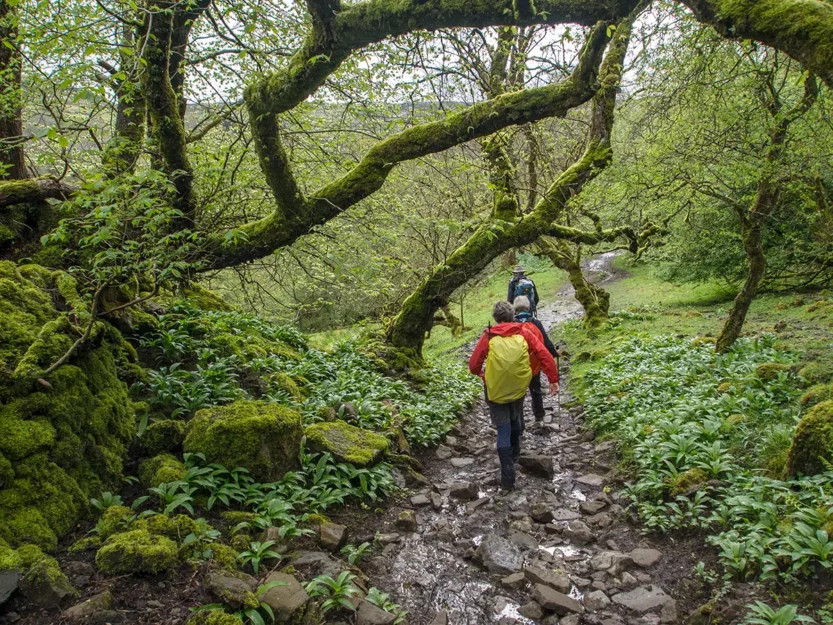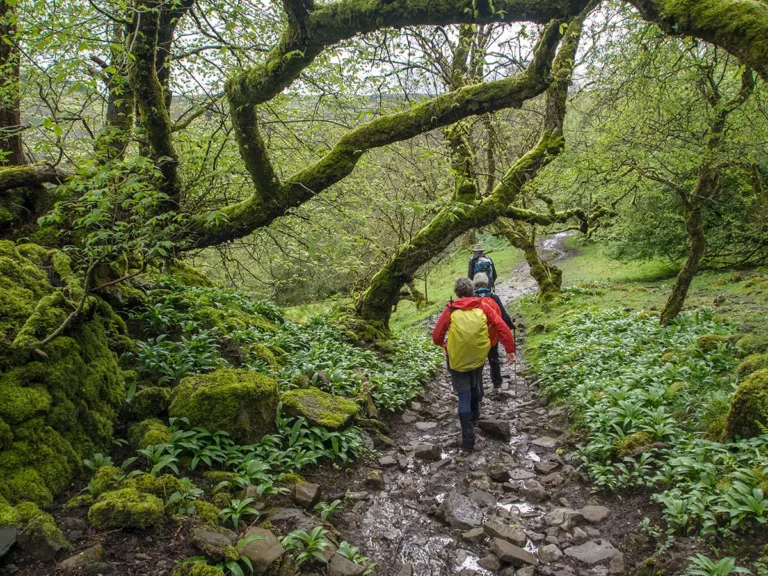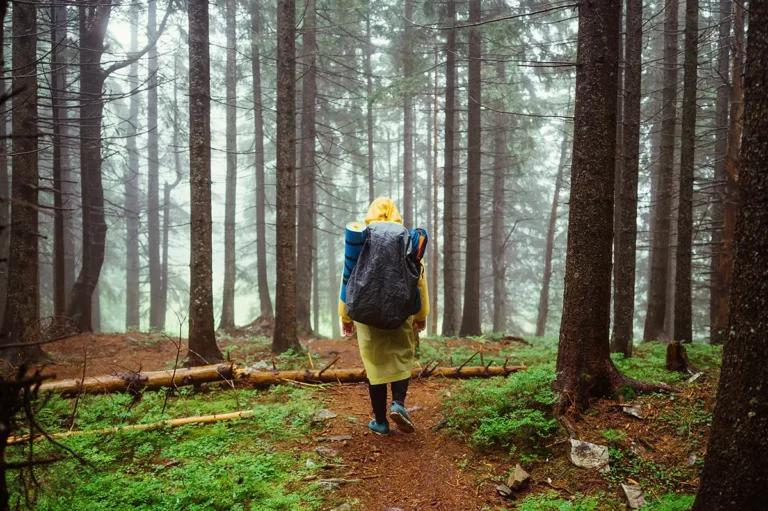If you’re looking for fancy sandwich ideas, you’ve come to the wrong spot. But hear me out. I’ve spent my life hiking in the desert heat and learned the essential dos and don’ts of packing sandwiches for hiking.
After all, you didn’t hike 5 miles scaling up hundreds of feet of elevation to find a soggy, off-putting sandwich waiting for you.
So, if you want to know which ingredients to avoid and the best to add for electrolytes and energy, you’ll be happy you found this.
At the end are a few of my favorite no-fuss hiking lunch suggestions.
The dos and don’ts of sandwiches for hiking
There’s a surprising amount to consider when packing sandwiches for a hike. The perfect sandwich not only needs to last hours in a sun-baked backpack but also to survive bouncing around next to sweating water bottles.
Let’s start with the best practices for food safety when packing sandwiches for hiking the great outdoors.
Safety first
Bacteria proliferate between 40 degrees and 140 degrees, multiplying by double in as quick as twenty minutes. The USDA recommends never leaving food out of the refrigerator for longer than 2 hours, and, when temperatures are over 90 degrees, no longer than 1 hour.
Food poisoning from bacteria or spoiled food can start as quickly as 30 minutes or take as long as two weeks. The symptoms of food poisoning include:
- Stomach cramps
- Upset stomach
- Nausea
- Fever
- Vomiting
- Diarrhea
Staphylococcus aureus (Staph) is the most concerning foodborne illness caused when hiking. The handling of uncooked food, followed by bacteria growth in a warm backpack, is the most common culprit of Staph illness. Staph can begin in as quick as 30 minutes or up to 8 hours.
To keep your backpack cold enough to maintain certain foods, you’ll need to carry ice packs, adding more weight to your pack. Or, take advantage of the one essential item you need, water.
Freezing water bottles the night before your hike provides you with cold water once melted and a way to keep your food cool — although not for long in high heat.
Backpack temperature test
To show the sun’s heating effects on a backpack, I placed three bottles of water, two cold and one frozen, in a waterproof hiking backpack to track the temperature. The bag was in the direct sun with ambient temperates of 85 to 88 degrees.
The results would not make for a safe environment for refrigerated foods.



The frozen water bottle was slightly chilled by hour three while the others were warm. On cloudy days with cooler weather, results will look drastically different, but never underestimate how the sun will turn anything into an oven.
In a real-world scenario, I would have frozen all the bottles, then placed them with any food in a grocery bag to better capture the cold.
AVOID these when preparing sandwiches for hiking
You’re 5 miles from camp, tired and hungry. You could eat just about anything right now, but should you?
Before a hike back is a terrible time to be bogged down into a food coma, reduce your hydration, or further overheat your body as some ingredients can. Avoid using these when planning sandwiches for hiking:
Mayonnaise
The big-brand mayonnaise in a jar is heavily processed and uses pasteurized egg yolk, allowing it to remain more stable when in a container. But by adding it to low-acidity foods, like potatoes to make a potato salad, the two can counteract each other causing foodborne illness.
Diuretic foods
Diuretics flush water and salt from your body, which is great for your kidneys but terrible for hiking in the backwoods. After all, you’re already fighting an uphill battle to remain hydrated on hikes. Natural diuretic foods include:
- Celery
- Garlic
- Onions
- Lemons
- Asparagus
- Tomatoes
- Avocado
- Bell peppers
- Ginger
- Watermelon
- Cucumbers
- Pineapple
- Caffeine
- Parsley
High-fiber (and fat) vegetables
Hiking with a bloated, full stomach makes for an uncomfortable experience. Avoid spreading avocado on your sandwich and eating these high-fiber vegetables inside or as a snack:
- Collard greens
- Artichokes
- Squash
- Kale
- Broccoli
- Carrots
- Spinach
Bread and crackers with flaxseed
Eating seeds and trail mix are fantastic ways to replenish electrolytes and stored energy, but flaxseed which is high in fiber and fatty acids, can cause gas and bloat.
Spicy foods
Ignore your appetite for spicy food until after your hike. Spicy foods temporarily elevate your body temperature, a risk you don’t need after a long hike and in hot weather.
A study published by USC showed that 96 percent of participants who ate Flamin’ Hot Chester’s Fries experienced an increase in body temperature. Fifty-eight percent experienced an increase after eating jalapeños.
Dairy, including certain cheeses
The National Institute of Health estimates that 68 percent of the world’s population has lactose malabsorption which restricts the small intestine from digesting the lactose you consume. Malabsorption leads to bloating and gas, or when intolerant, diarrhea.
High lactose cheeses include:
- Feta
- Ricotta
- Velveeta
- American
Popular cheeses with the lowest lactose ranges include:
- Brie
- Cheddar
- Provolone
- Gouda
- Parmesan
- Blue

Do THIS when packing sandwiches on a hike
You don’t have to avoid packing sandwiches for hikes, but you might have to find alternative ways to enjoy them. Here are some best practices when bringing sandwiches for hiking.
Seal the sandwich well
It’s best to wrap a sandwich in plastic wrap since it holds the ingredients in place while protecting it from water bottle condensation. It’s also extremely lightweight and easy to ball up and carry out.
Consider a wrap instead
Two thin slices of bread aren’t enough carbs to considerably weigh you down, but instead of a hoagie roll, consider a wrap. A wrap can withstand the conditions of a backpack better with fewer heavy carbs to slow you down on the trek back.
Stick with easily digestible meats
Fibrous and processed meats — including those inside a casing like a hotdog — cause your body to work harder to digest them. Lean proteins, like all-natural turkey and chicken, provide much-needed protein to support your muscles and salt to replenish electrolytes. Plus, they digest quicker, causing less risk to an uncomfortable trek back.
Dr. David Friedman, the author of Food Sanity: How to Eat in a World of Fads and Fiction, notes fish takes 30 minutes to digest, chicken takes one and a half to two hours, and red meat, including pork and lamb, up to five hours.
Pick a combination of food textures
You just walked thousands of steps, a sometimes mundane task of repetitiveness. Spice up your hike (not literally, avoid spicy food) with foods that have crunch, saltiness, and some sweetness. Think bacon, nuts, and apples.
Use on-the-go condiment packets
You can eliminate the risk of spoiled mayo or soggy bread by bringing condiment packets along, especially mayonnaise. Stop by a quick-serve deli to scoop a couple of their packets or purchase a pack to be prepared for future hikes.
Hiking lunch suggestions
A whole wheat turkey sandwich with provolone cheese, bacon, and iceberg lettuce topped with mayo from a condiment packet is a perfect hiking sandwich. If a turkey sandwich doesn’t hit the spot — and I’ve ruined your plans for an Italian hoagie — consider these lunch ideas for the trail.
- Turkey and cheese pinwheel
- Tuna in the pouch
- DIY Lunchable of crackers, cheddar cheese, and deli turkey or chicken
- Chicken salad with pouch chicken (or pre-made StarKist)
- Hummus and Pita
- Vegetarian dolmas (stuffed grape leaves)
If you’re on a shorter hike, getting by on snacks and finishing with a big post-hike meal is also ok. Great hiking snacks include:
- Beef jerky
- Trail mix
- Snack or protein bar (check the ingredients first)
- Fruits like bananas and apples
- Dehydrated fruits
Final thoughts
If you’re going on a relatively easy, few-hour hike, you can break some rules. The difficulty and distance of the hike all significantly influence what you should eat.
As a hiker, you’re already facing physical risks of injury, overheating, and exhaustion. Don’t add more risk of food poisoning from bringing foods that spoil quickly.
After all, chicken wings and fries taste better after a strenuous hike, so eat a light, safe meal during your hike, and treat yourself with anything you want after.
You worked hard for it.
Did you almost pack the wrong sandwiches for hiking? Share this article on social media to save others from a soggy, spoiled sandwich when they need food the most.


